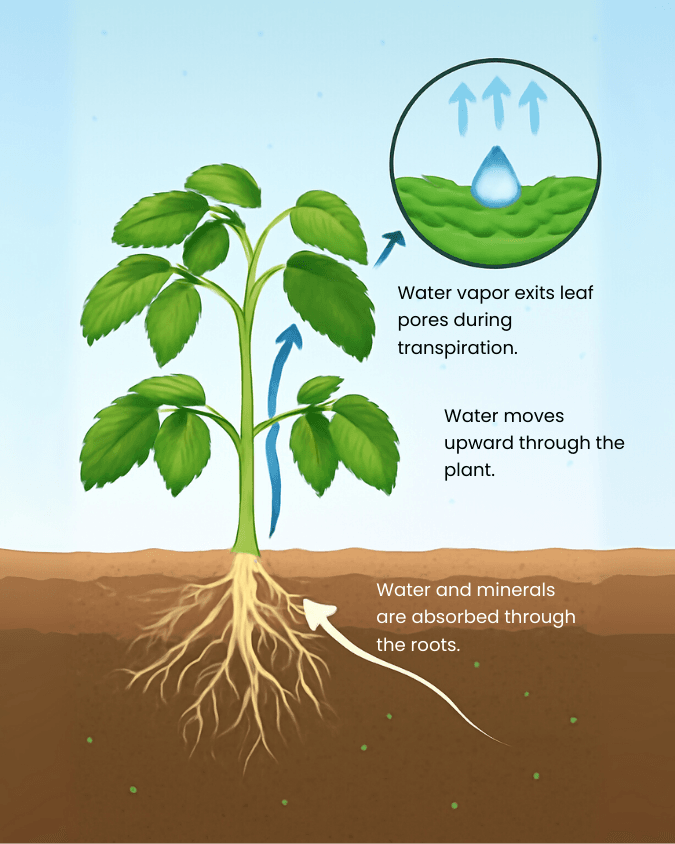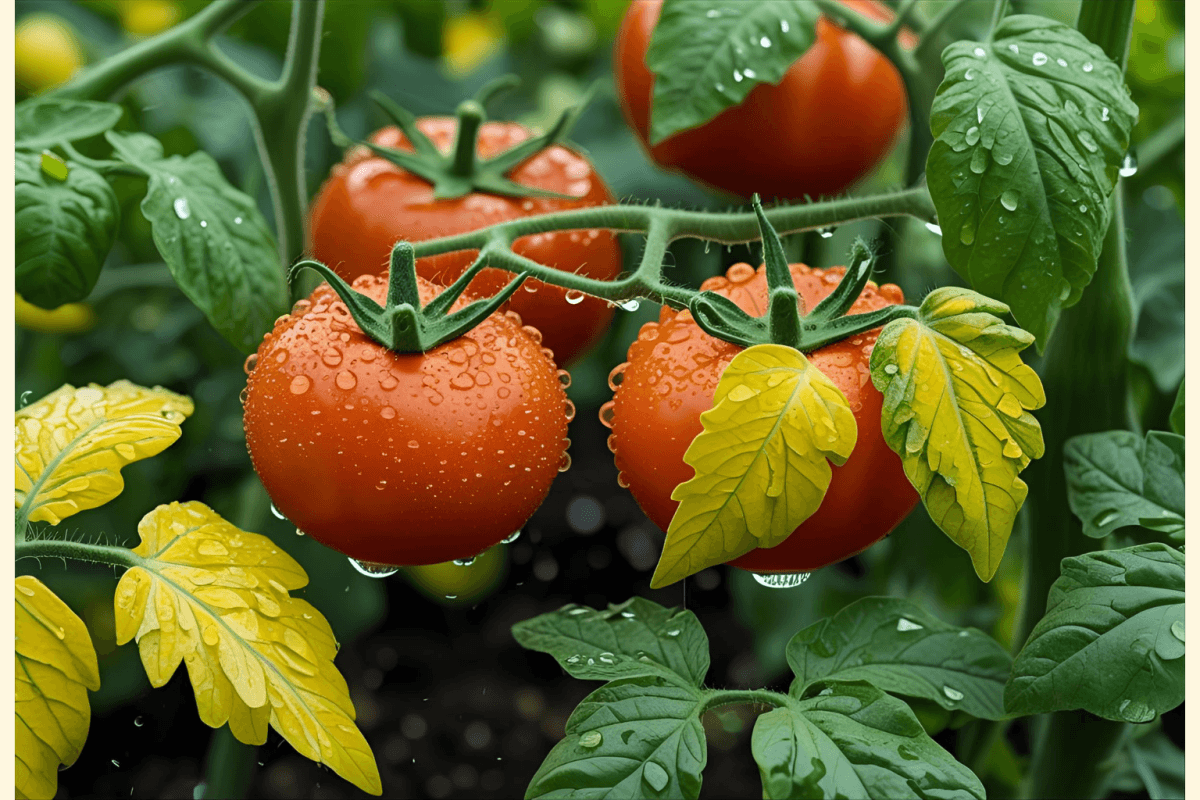🌱 So, you’ve done everything right.
Given your plants the best khad, proper sunlight, and even checked for pests. Yet, the leaves are turning yellow. Why?
The natural thought is—maybe the plant is not getting enough nutrition.
But here’s the truth: in most cases, it’s not nutrients at all.
This one hidden reason quietly kills more plants in our home gardens than pests, diseases, and deficiencies combined.
And the culprit is… water!
Not the lack of it alone, but mistakes in watering—whether too much or too little. This is what quietly turns leaves yellow and weakens plants. In this blog, I’ll show you how to spot the difference and fix it before it’s too late.
Why Leaves Turn Yellow in Home Gardens
Yellowing leaves can be confusing. You feed your plants, give them sunlight, even check for pests — yet the green fades.
Too much water or too little both block the smooth supply of nutrients inside the plant. And when that flow is disturbed, the leaves show it first — by turning yellow.

The Science Behind Yellowing of Leaves in Plants
Roots are made of living cells. These cells absorb water that has dissolved nutrients in it.
The absorbed water and nutrients travel upward to the leaves. Leaves then use it to make plant food, which keeps them green and supports growth.
After sending water up, the root cells become empty again. This creates a gentle suction, pulling more water and nutrients from the soil.
This natural cycle continues as long as roots stay healthy.
Now let’s see what disturbs this system 👇
How Overwatering and Underwatering Cause Yellowing of Leaves
When Soil is Waterlogged (Overwatering)
- Roots also need oxygen from tiny air pockets in the soil to stay alive.
- When excess water fills these air pockets, roots suffocate.
- Without oxygen, root cells stop working, and the suction breaks down.
- Nutrients may still be in the soil, but roots cannot pull them in.
- Heavy rains also wash away nutrients (leaching) and disturb soil pH balance.
- Result → Leaves turn yellow, soft, and weak.
When Soil is Too Dry (Underwatering)
- In dry soil, nutrients cannot dissolve.
- Without water as a medium, roots cannot absorb or create suction.
- Soil hardens, further restricting absorption.
- Result → Leaves turn yellow at the edges and become dry and brittle.
So whether it’s too much or too little, both disturb the nutrient flow to your plants and show up as yellowing leaves.

How to Prevent Yellow Leaves During the Rainy Season
-
Make sure your pots and beds have proper drainage.
-
If the soil feels soggy, loosen it gently to let air pockets form again.
-
Avoid watering on days when it has already rained.
-
For soil that has lost nutrients due to leaching, a light dose of organic fertilizer can help.
-
And yes—when roots are stressed and not absorbing well, you can also try foliar spray (directly spraying nutrients on leaves) as a temporary rescue.
Overwatering vs. Underwatering: How to Tell the Difference
Overwatering signs:
-
Leaves turn yellow starting from the lower part of the plant.
-
The whole leaf may turn yellow, not just the edges.
-
Soil feels wet or soggy for long hours.
-
Growth may slow down.
Underwatering signs:
-
Yellowing often starts at the edges or tips, sometimes with browning.
-
Leaves may curl or wilt.
-
Soil feels dry and hard.
-
The plant looks weak but recovers quickly after watering.
Frequently Asked Questions on Yellowing of Leaves in Plants
Yes, overwatering fills soil air pockets with water, suffocating roots. Without oxygen, roots stop absorbing nutrients, and leaves turn yellow.
Check the soil. If it’s soggy, it’s likely overwatering. If it’s dry and hard, underwatering. Patterns of yellowing also differ (whole leaf vs edges).
Yes, even if soil is rich, roots can’t absorb nutrients without oxygen. Rain may also leach nutrients out of soil.
Improve drainage, reduce watering, and add organic fertilizers. In severe cases, use a foliar spray for quick recovery.
If only a few leaves are yellow, remove them to reduce stress. If many are yellowing, first fix the watering issue before pruning.
Sometimes yellowing is due to pests or diseases like leaf curl or mosaic virus (read more here)
Have you seen yellow leaves in your garden? Share your plant’s story in the comments below.👇



Essential Gardening Tips for Beginners: Complete Guide 2025
Complete step-by-step guide to urban container gardening, soil preparation, and growing fresh organic vegetables and fruits at home for beginner
🍓 How to Grow Strawberries in Pots at Home in India: Complete Q&A Guide
Aug
Pusa Plant Nursery – New Delhi
Jul
मिर्ची / चिली उगाए कैसे – ये 2 गलती कभी न करे
Jul
5 Amazing Tips For Growing Strawberries at home -Video (Hindi)
Feb
A Beginner’s Guide to Buying the Perfect Grafted Mango Plant
Jul
बिगिनर गाइड: अमरूद गमले में कैसे उगाये?
Jul
Stop Killing Your Broccoli Seedlings! 🌱 Easy Fix for Beginners
Sep
How to Grow Blueberries in Pots in India – Best Varieties, Chill Hours & Care Tips
Sep
Secret of Growing Bigger Strawberries -Video (Hindi)
Feb
Planting seedlings in containers
Sep
100% Effective Way to Get Rid of Mealybug on Hibiscus Plants in 2 Steps
Jun
🌱 Plan Your First Garden – Easy Crops for Beginner Success! 🌱
Sep
When Do Seedlings Need Fertilizer? Beginner’s Guide
Sep
6 Tips for Successful Germination Of Seeds
Oct
Can a Papaya Plant Grow in a Pot & produce Fruit? Video (Hindi)
Feb
Complete Home Vegetable Gardening Course – Soil – The Foundation of Growth
Sep